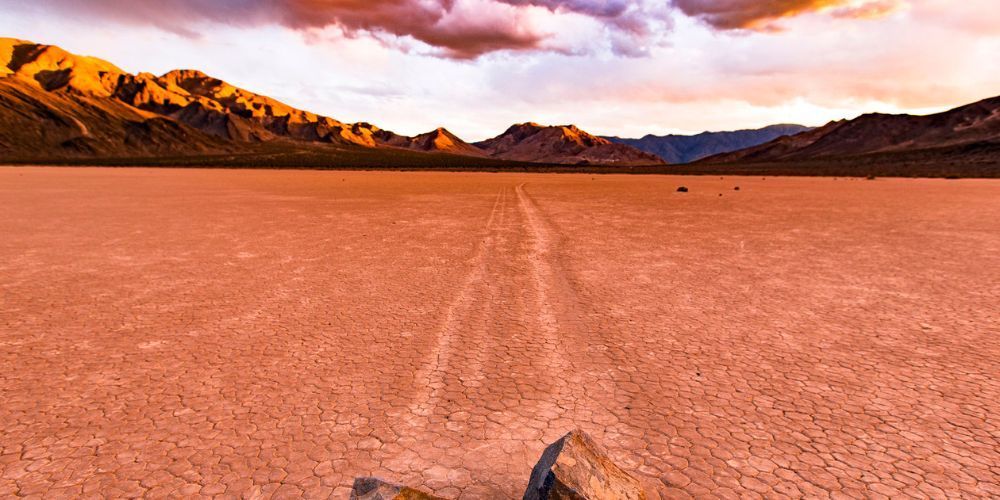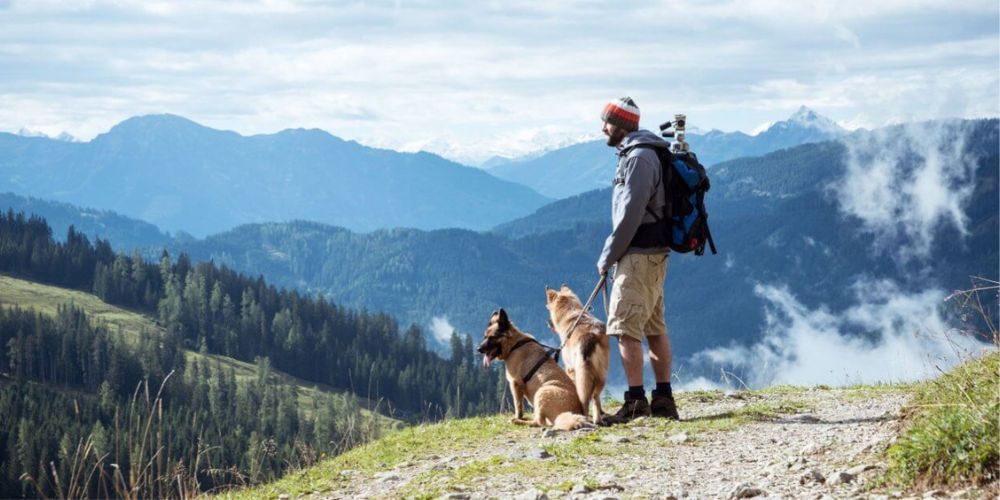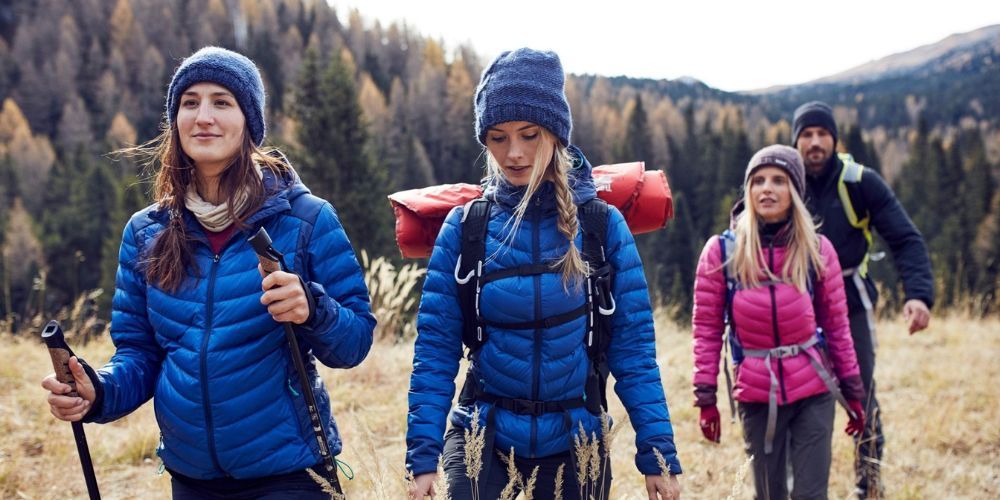The Best Hiking Boots for Outdoor Adventures: Expert Reviews
Choosing the right pair of hiking boots can make all the difference between a challenging yet exhilarating hike and one filled with discomfort or even injuries. Studies reveal that quality hiking boots can decrease the risk of common hiking injuries by up to 68%, underscoring their importance for any outdoor enthusiast.
But perhaps you've noticed how some lightweight boots, initially meant for day hikes, now use advanced technologies making them durable enough for longer journeys. This article dives deep into expert reviews on various hiking boot types, ensuring you find the perfect fit for your adventures without enduring unnecessary pain or wasting money on subpar options.
The top hiking boot for 2024 is the Salomon X Ultra 4 Mid GTX. It combines speed, lightness, stability, and solid toe protection, making it an excellent choice for various hiking terrains. For those on a budget, the Merrell Moab 3 Mid WP offers exceptional comfort and cushioning.
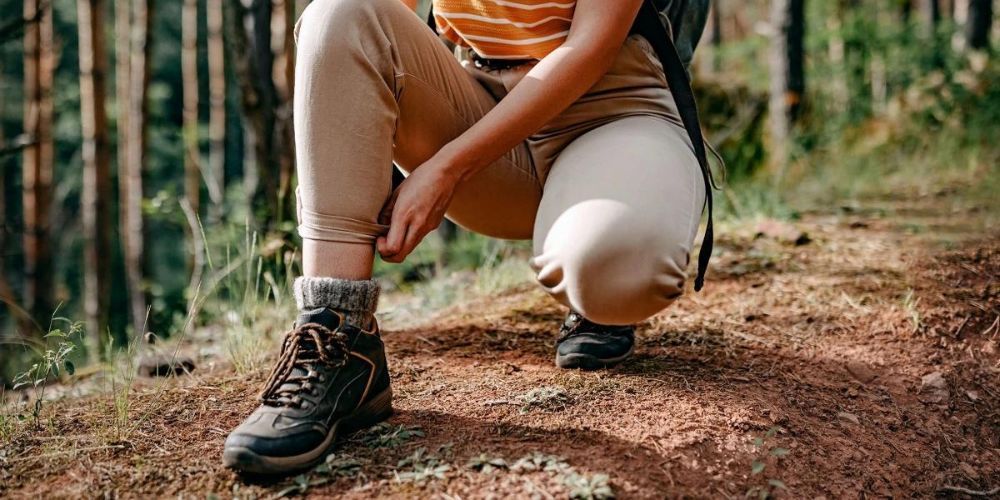
The Importance of Quality Footwear
When it comes to hiking, your boots become your best friends on the trail. They're not just another pair of shoes; they're your support system, performance enhancers, and assurance of durability. Let's dive into why quality footwear is essential for hikers.
One of the most critical aspects of proper hiking boots is their ability to prevent injury. Picture being out on a challenging trail, and suddenly your ankle twists, or you feel the sting of blisters—it's not only painful but can quickly ruin your entire adventure. Quality hiking boots are designed with essential support features that can significantly reduce the risk of common hiking injuries like ankle sprains, blisters, and stress fractures. Statistics show that wearing proper hiking footwear can cut down the risk of these injuries by up to 68%. So, investing in high-quality boots isn't just about comfort; it's about keeping you safe and able to enjoy your hike with peace of mind.
In addition to injury prevention, quality hiking boots also enhance your overall performance on the trail. They provide better grip, stability, and comfort—crucial elements for hikers seeking to cover longer distances with ease and reduced fatigue. Think of your boots as the best travel companions that enable you to conquer challenging terrains while minimizing discomfort.
Moreover, the durability of your hiking boots can have a significant impact on your outdoor experiences in the long run. High-quality boots are constructed from sturdy materials such as full-grain leather or high-grade synthetic fabrics that can withstand harsh conditions, rough terrains, and extensive use over time. This robust construction ensures that your boots last longer, offering better value for your investment. By choosing durable hiking boots, you're not only ensuring longevity but also minimizing the need for frequent replacements, saving you both money and time in the long term.
Quality footwear goes beyond mere comfort—it's an integral part of ensuring safety, performance, and resilience on the trail, making it a foundational element for any outdoor enthusiast who values their hiking experiences.
As we tread through the landscapes of quality footwear, understanding the various types of boots available could further elevate our outdoor adventures. Let's now turn our attention to...
Types of Boots for Hikers
When it comes to choosing the right pair of hiking boots, it's not just about finding the one that looks great—it's more about matching the type of boot to the specific adventures you have in mind. Let's take a closer look at some different types of hiking boots:
Lightweight Boots
Lightweight boots, like the Salomon X Ultra 4 Mid GTX , are perfect for day hikes and shorter trips. Made with flexibility and minimal break-in time in mind, they offer convenience and comfort for activities that don't require heavy-duty support.
These boots are not too heavy on your feet, so you won't feel tired as quickly on shorter walks. They're like the running shoes of the hiking world—nimble and light, allowing for comfortable movement without sacrificing ankle support. Their lightness also makes them suitable for warm weather hiking, ensuring that your feet won't overheat as quickly.
Midweight Boots
Midweight boots, such as the Merrell Moab 3 Mid WP , are an excellent choice for backpacking trips. They offer a bit more support and cushioning without being too heavy or bulky. These boots strike a balance between weight and sturdiness—ideal for longer hikes where you need extra protection and comfort but without the bulk associated with heavyweight boots.
The advantage here is that while these boots are sturdier than lightweight ones, they're not excessively heavy. They strike a nice middle ground—providing stability without becoming a burden during long treks.
Heavyweight Boots
For rough terrain or carrying heavy loads, heavyweight boots are the way to go. The Salomon Quest 4 GTX is a prime example of this type of boot. Robust and able to handle extensive wear and tear, these boots provide maximum support and protection—perfect for demanding trails where ankle stability and underfoot protection are paramount.
You'll feel well-protected even on challenging terrains with heavyweight boots. If you plan on carrying a heavy backpack or traversing uneven and rocky paths, these boots will be your best friends—keeping you stable and secure every step of the way.
Trail Runners
For fast-packers and ultralight hikers who prefer speed and agility over bulk and weight, trail runners like the Hoka Anacapa 2 Mid GTX come to the rescue. These lightweight shoes offer excellent breathability and allow hikers to move swiftly through all kinds of terrain.
Think of trail runners as the sports cars of hiking footwear—they're built for speed and performance. These shoes are designed to keep your feet cool and comfortable, making them an excellent choice for warm weather hikes or those who prioritize speed over additional support.
Choosing the right type of hiking boot depends on various factors such as terrain, duration of the hike, load-carrying needs, and personal preference. Each type has its own unique characteristics tailored to specific outdoor pursuits, so finding a pair that aligns with your particular needs is crucial for a successful and enjoyable hiking experience.
As we've delved into an array of hiking boot options suited for different outdoor pursuits, let's now shift our focus to understanding key features and materials that make these boots perform optimally in various conditions.
Key Features and Materials
When you're out on the trail, the right pair of hiking boots can make all the difference. Let's examine some of the most essential features and materials to look for when choosing your perfect pair.
Waterproofing
Ensuring you put your best foot forward means staying dry and comfortable even in wet conditions. Gore-Tex membranes and similar waterproof linings are a game-changer here. They keep moisture out while letting heat and sweat escape, so your feet stay dry and happy.
Sole Quality
The sole of your boot provides the traction and stability to keep you on your feet, no matter how challenging the terrain gets. Look for rubber soles with deep lugs that offer superior grip on a variety of surfaces. Brands like Vibram are renowned for their high-quality outsoles, designed to give you confidence in every step.
Choosing the right sole strength depends on the kind of trail you normally hike. The terrain will dictate how deep the lugs should be for a firm grip.
Upper Material
The upper part of your boot is just as crucial as the sole. Different materials offer various benefits:
Full-grain leather offers maximum durability and abrasion resistance, which is perfect for rough, rocky trails. It might take a bit more breaking in but it will last longer.
In contrast, synthetic materials are lighter, faster drying, and often more breathable. They're great for day hikes or if you prefer something easier on your feet.
Ankle Support
One feature that cannot be overlooked is ankle support. This is especially crucial for preventing twists and sprains on rugged trails. High-cut boots provide improved ankle support, offering that extra layer of protection that can make all the difference during a challenging hike.
Each of these key features serves a specific purpose, with the potential to greatly enhance your hiking experience based on your unique needs and preferences. By understanding what to look for in each feature, you can ensure that your next hike is not only enjoyable but also safe and comfortable from start to finish.With an understanding of what makes hiking boots stand out in various outdoor conditions, let's now shift our focus to examine leading boot brands known for their exceptional performance and quality construction.
Leading Boot Brands Reviewed
When it comes to hiking footwear, having the right pair of boots can make all the difference between an enjoyable adventure and a painful endeavor. Let's take a closer look at some of the most reputable boot brands and their noteworthy models.
Salomon has built a solid reputation for producing high-quality, innovative hiking boots. The Salomon X Ultra series stands out for its exceptional balance between comfort and performance. These boots are designed to provide excellent traction and stability on rugged terrain while maintaining lightweight agility. The inclusion of features like the Quicklace system ensures a secure fit, instilling confidence with every step. Whether you're day hiking or fastpacking, Salomon's meticulous attention to detail and ergonomic designs make them a top choice.
Merrell is celebrated for crafting comfortable and affordable hiking boots, with the Moab series being a perennial favorite among hikers. Known for their supportive cushioning and trusty Vibram outsoles, these boots offer reliable performance on various trails. The Merrell Moab 3 Mid WP strikes a balance between cost-effectiveness and quality, making it an appealing option for those seeking dependable footwear without breaking the bank.
Lowa has earned a strong following due to its unwavering commitment to exceptional build quality and robust design. The Lowa Renegade GTX Mid is a standout model favored by many outdoor enthusiasts for its durability and supportive construction. These boots are engineered to withstand challenging terrain while providing ample ankle support and waterproofing, ensuring that they hold up during extended expeditions.
If maximum cushioning is your top priority for long hikes, Hoka One One's Anacapa 2 Mid GTX offers an indulgent experience. Recognized for their ultra-plush comfort, these boots utilize high-quality materials and solid protection to deliver a smooth ride. While the generous cushioning may not appeal to all hikers, those seeking unparalleled underfoot support will appreciate the emphasis on comfort without compromising performance.
In summary, each brand brings distinctive strengths to the table, encompassing a wide spectrum of preferences and needs for outdoor enthusiasts looking to invest in reliable hiking boots.
As we explore the diverse selection of trail-ready footwear from these leading names in the industry, it becomes evident that there is no one-size-fits-all solution when it comes to selecting the ideal pair of hiking boots. Each brand caters to a unique set of requirements, balancing considerations such as comfort, durability, support, and traction based on the preferences of individual hikers.
As we have now delved into the offerings of leading hiking boot brands, it’s time to turn our attention to the essential factors in Choosing the Perfect Pair for your outdoor escapades
Choosing the Perfect Pair
When it comes to hiking, selecting the right boots is one of the most crucial decisions you'll make. It can mean the difference between a delightful stroll and an uncomfortable slog. Let's explore some vital considerations to keep in mind when choosing your perfect pair.
Assessing Your Hiking Style
To begin, consider what type of hiking you plan to do. Are you a day hiker exploring short nearby trails, or an avid backpacker logging serious miles? For instance, day hikers might prioritize lightweight and flexible boots that offer agility and ease of movement, while backpackers need more supportive and durable options that can handle challenging terrain with a heavy load. Ensure your boot choice aligns with the demands of your adventures.
Fit and Comfort
One of the most critical aspects of selecting hiking boots is ensuring they fit properly. Always try on boots with the socks you plan to wear while hiking. Fit is everything here - there should be enough room to wiggle your toes without feeling cramped, but your heel should stay firmly in place without excessive movement. A poorly fitting boot can ruin any hike, no matter how well-made it is.
Testing in Store
When trying out boots in-store, don't just sit there hoping for a good fit. Get up and walk around! Many reputable outdoor gear stores have inclined surfaces or artificial rocky paths where you can simulate trail conditions. This will give you a better sense of how the boots will perform in real-life scenarios. After all, it's one thing for a boot to feel great as you're sitting down, but it's quite another when you're walking up and down hills.
Some stores even have small simulated trails where you can take a few laps to gauge comfort and support. Don't skip this part - it's essential to know how well the boots feel and support your feet in different terrain conditions.
Sizing Concerns
Remember that your feet swell during longer hikes due to extended use and heat buildup. Considering this, you might want to buy hiking boots that are a half size larger than your regular shoe size to accommodate this swelling. The last thing you want is for snug boots to become tight and uncomfortable halfway through your adventurous trek.
By paying attention to these factors – including your preferred hiking style, proper fit and comfort, testing them out in-store, and sizing concerns – you can set yourself up for a successful and comfortable hiking experience with the perfect pair of boots for your outdoor explorations.
In fine-tuning the art of selecting optimal hiking boots , ensuring their care becomes equally paramount. Let's now shift our focus to expert tips for extending the lifespan and performance of your prized footwear.
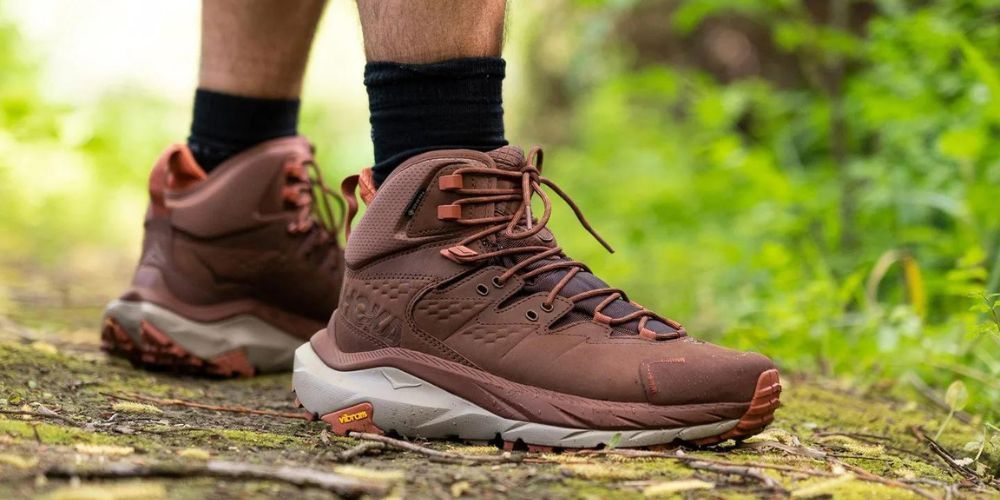
Expert Tips for Boot Care
Your hiking boots are essential gear for outdoor adventures, and to keep them in top condition, it's crucial to follow some expert advice on boot care. Let's break down the key tips to ensure your hiking boots stay in pristine condition for all your future hikes.
Cleaning After Each Hike
After a long hike, your boots might be caked with dirt and debris. To remove this, use a soft brush and lukewarm water to gently scrub away the grime. It's important to avoid using harsh chemicals as they can degrade the materials of your boots over time. Remember, keeping your boots clean not only maintains their appearance but also enhances their performance by preventing premature wear and tear.
Proper Drying Methods
Moisture is the enemy when it comes to preserving your hiking boots. Always air-dry your boots away from direct heat sources such as radiators or open fires. Exposing them to extreme heat can cause the materials to crack, shrink, or lose their shape. Instead, remove the insoles and laces, then let your boots dry naturally at room temperature. This simple step goes a long way in maintaining the integrity of your boots.
Imagine your hiking boots as an investment in comfort and performance; proper drying methods are like giving them a spa treatment after a long day on the trails.
Regular Conditioning
For leather boots, conditioning is key. Apply a suitable conditioner after cleaning to keep the leather supple and prevent it from drying out and cracking. This helps maintain the waterproof qualities of the material and ensures that your boots remain comfortable and flexible even after years of use. The right conditioner not only protects but also revitalizes the natural oils in the leather, extending the life of your boots.
Storage Advice
When it's time to pack away your hiking boots after an adventure, remember that proper storage is essential. Find a cool, dry place for them to rest - away from direct sunlight which can cause fading and damage. Additionally, stuffing them with newspaper can help maintain their shape and absorb any remaining moisture, ensuring they're ready for your next escapade into nature.
Properly storing your boots isn't just about keeping everything organized; it's about setting them up for success on your next journey. After all, nothing beats slipping into a pair of well-maintained hiking boots that still carry the memories of past adventures.
We hope these expert tips provide you with the knowledge needed to preserve the quality and performance of your hiking boots for years to come! If you need more information on choosing or caring for hiking boots tailored to your specific needs, be sure to explore our comprehensive guides and reviews.By following these expert tips for boot care, you'll ensure that your trusty hiking companions will continue serving you well through many more outdoor adventures.
Nature's Playbook
As an Amazon Associate I earn from qualifying purchases.





